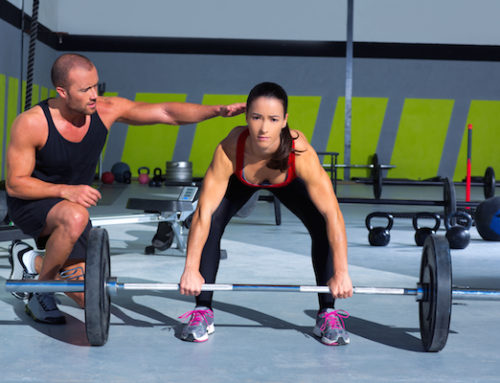Compound versus Isolation
There are many ways to exercise and countless methods of training for the large variety of specific training goals that are out there. Within each of these methodologies are a huge number of exercises and variations of exercises that can be used to achieve each goal. So, generally speaking there is certainly no shortfall in the variety of exercises that are out there with the only limitations being that of our own imagination.
In this article, however, we are going to simplify the various types of exercises in relation to your individual aims in training. Mainly, we’re going to discuss Compound, or multi-joint exercises and why they are essentially superior to Isolation, or single joint exercises in most cases.
Compound exercises refer to those movements that incorporate several muscle groups and two or more joints in the one action. In opposition to that, Isolation exercises refer to those that are single joint movements and usually focus on only one muscle group at a time. For example, the Squat is a typical compound exercise that involves movement at the ankle, knee and hip joints and works the muscles throughout the Gluteals (butt), Hamstrings, Quadriceps, and Calves and also the inner and outer parts of the leg that stabilise the movement. In comparing this to an exercise like the Adduction machine (the one at the gym that looks like the Gyno’s chair) that works the inner thigh where many thigh-conscious females like to focus and involves only the hip joint, we can explore certain major differences.
There are several factors to consider when comparing the two vastly different types of exercises. Firstly, compound exercises involve the combined movements of several joints to accomplish the one action. This means there are more muscle groups being used and generally including the major muscle groups. So, in every compound action there are more muscles burning more energy (calories) in a short period of time and resulting in a higher intensity. This greater acute energy expenditure creates a greater metabolic disturbance (meaning there is a higher metabolism longer term) and a higher metabolism is exactly what most of us crave.
Secondly, because there are more muscles stabilising the movement a lot more weight can be lifted. As we all know, you can lift far more weight in a press or squat than you can in a tricep pushdown or leg curl. Due to the larger loads and synergistic muscle activity there is actually more neural input (meaning more stimulation from the brain to the nerves supplying the muscles) and hence more muscle fibre recruitment. For those that may be a little unclear let me explain without getting into too much technical jargon because it’s one of the more important distinctions.
Basically, each muscle is made up of hundreds of little strands, or bundles of fibres (as you find when you peel open a cooked chicken breast), and these are only activated/recruited when needed. Using arbitrary numbers, let’s say for example there are 100 fibres in a muscle. If it only takes 30 of them fibres to generate the force needed to lift a certain weight, say 1kg, then the body will not activate any other unneeded fibres on this weight. Therefore, the only way to recruit more fibres in this motion is to lift more
weight or lift it repetitiously until these muscle fibres fatigue and the others are called into action. Ideally, if we want to work all of the muscle fibres we need to lift loads that require more neural stimuli over enough repetitions to recruit the full set of fibres.
The practicality of this is quite simple – would you rather work and tone half of your muscle or all of your muscle? The answer is quite clear, but to most people the way to do that isn’t, or else we would see more people working a little harder on the compound lifts.
As you could probably imagine, this factor alone also has a much better effect on overall strength, muscle improvement, and metabolic parameters like glucose uptake (diabetes), energy expenditure (calories) and oxygen utilization (fitness).
Thirdly, there is a factor known as proprioception, or balance that comes quite highly into play in attaining true health and especially in rehabilitation and sporting scenarios. The level of control and balance between the muscles around a joint depends highly on the precision of sensory input from the receptors in the muscle that tells the nervous system when a muscle is stretched and how much tension there is. With this mechanism optimally functioning one can quite easily balance on one leg with their eyes shut, because the proprioception from the muscles around the ankle and knee would work to synergistically balance all the muscles around those joints to stabilize you. Even when you sway slightly off balance your finely tuned muscles would pick up the variation in muscle lengths and cause a reciprocal action to bring you back into alignment. Without this sensory input, however, there is much less coordination and balance, despite there being adequate strength. This low level of proprioception is common in people who do not train for balance or stick purely to isolation exercises and especially in those who have sustained injuries (where the tearing of a muscle literally destroys the sensory receptors) and hence the high prevalence of re-injury. Most compound movements play a significant role in enhancing the proprioceptive function in the muscles.
As a final point, another advantage to compound exercises that I particularly like is that it saves a lot of time. Due to the fact that several major (and minor) muscles are being used in the one motion you get to work the whole body in only a few exercises and don’t have to spend all day in the gym to get a good workout. All compound movements work in well with the natural movements of the body, as they are all simple pushes and pulls that the body is designed to handle.
So, coming back to our example above with the comparison of the squat versus the thigh adductor, we can see the following advantages to the squat: Although the adductor is a great way to isolate and concentrate on the inner thigh muscles the squat not only works more of the inner thigh fibres but also all other major muscles in the lower limb, burns more energy, increases metabolism and lean mass to a greater extent, aids in balance and stability and has a cardiovascular effect as well because of the higher intensity and energy demand. Covering half your body’s workout in one exercise that takes the same duration of time as the Adductor, why would anyone prioritise the isolation over the compound option? And I know what you might be thinking – “because the squat is HARDER” – and yes – there is definitely that distinction that separates the serious athlete from the recreational exerciser.
If you are aiming to gain maximum benefit from exercise, regardless of whether its weight loss, toning, strength or building muscle mass that you’re after, the basic compound exercises should be a staple part of your routine, beyond which you can add whatever variation you wish.
The basic compound exercises are:
- Pushes – pushups, bench press, shoulder press, dips.
- Pulls – chin ups, pulldowns, bent rows/one arm rows, pulling.
- Leg pressing – squat, leg press, lunge, jumps, deadlift.
- Functional – whole body pulling/pushing/balancing, supporting/bracing.





